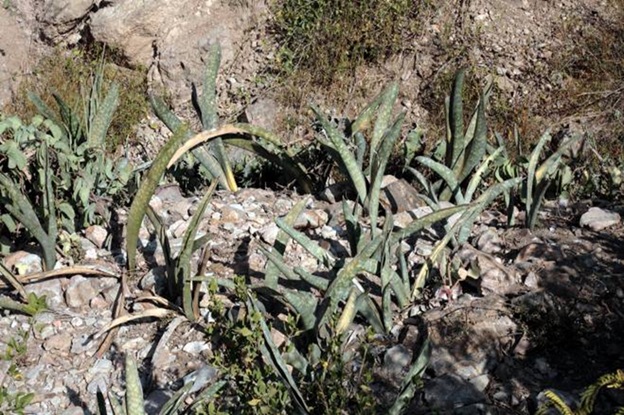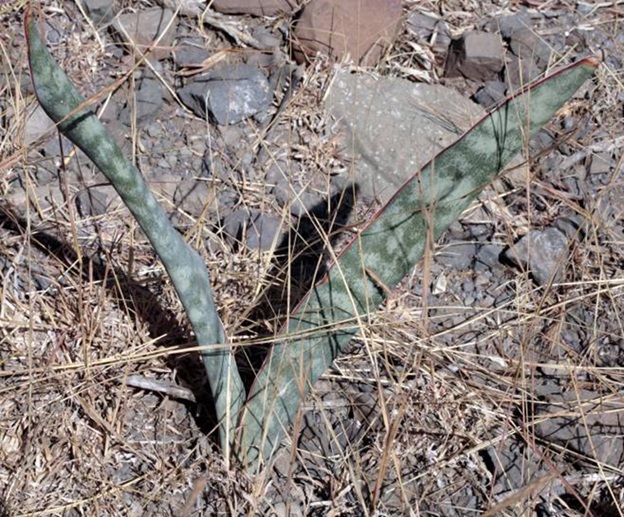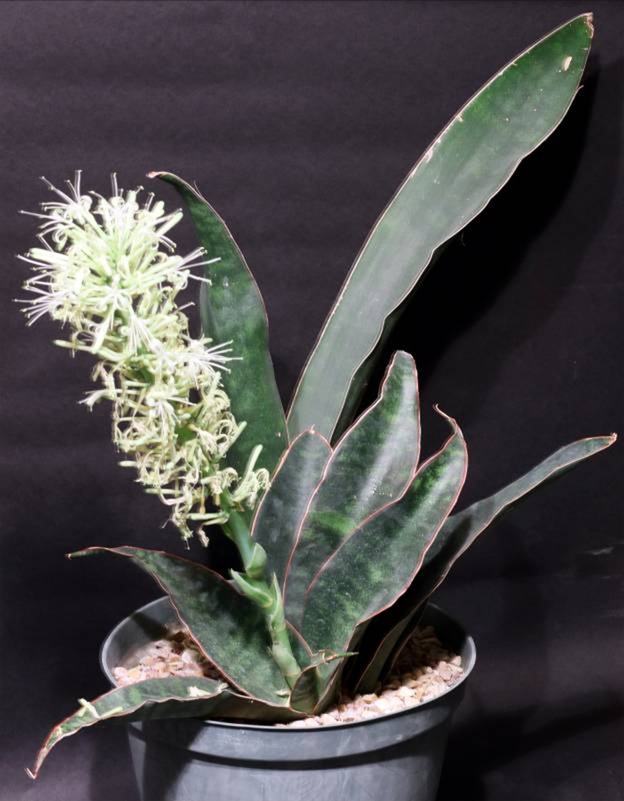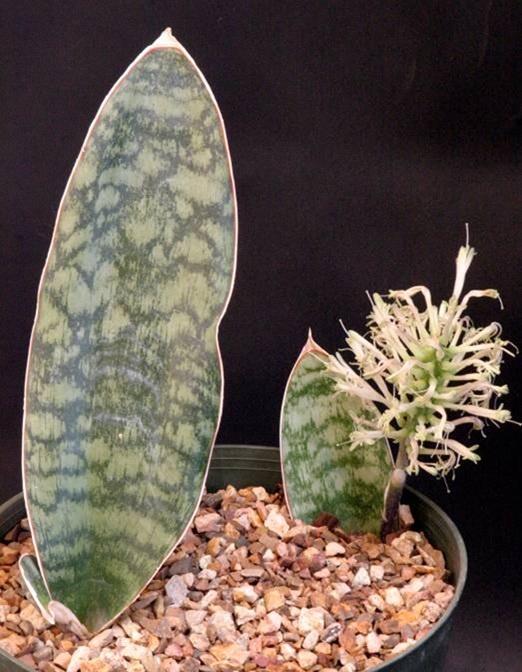| Protologue: |
Systema Vegetabilium (C. Linné), Edn. 15, 7(1): 304 (1829). |
| New Combination: |
Kew Bulletin 38: 83 (1983). |
| Etymology: |
This epithet honors Pehr Forsskål, a Finnish botanist of the 18th century and a traveler in Egypt and the Arabian Peninsula. |
| Subgenus: |
Sansevieria |
| Group: |
Sansevieria elliptica |
| Distribution: |
Yemen, the Sudan, Djibouti, Eritrea, Ethiopia, Somalia, and possibly northeastern Kenya. |
| Brief Description: |
This is another broad-leaf acaulescent and rhizomatous species that belongs in the Sansevieria elliptica group. The leaves number 1 - 3 and are erect, lanceolate, and range in length from less than 30 cm to greater than 60 cm with a width of 6.3-7.5 cm. The upper surface is smooth, and the lower surface is slightly rough. The leaves are narrowed from the middle downwards to a channelled petiole 1/5 - 1/3 as long as the leaf. The leaves are green to gray green with or without lighter green mottling and vague banding, and they end in a brown hardened tip. The leaf margin is somewhat wavy and reddish-brown with a white edge. The inflorescence is up to 95 cm tall and simple with 4 - 5 flowers per cluster. |
| Similar Species: |
At one point, Sansevieria forskaoliana was regarded as the dominant broad-leaf species in Kenya, but with all the new species descriptions from East Africa, it may not even occur there. It could be mistaken for two of the species in that region with subdued mottling and banding, including Sansevieria conspicua and S. frequens, but S. forskaoliana has mostly a gray-green leaf color that is rather distinctive, especially given its typically shorter leaves with roughened undersides. Sansevieria abyssinica is considered to be lumped into S. forskaoliana, but it may be sufficiently distinct to deserve a species rank. |
| |
| |

A group of Sansevieria forskaoliana southeast of Taiz, Yemen.
|
| |

Sansevieria forskaoliana in habitat near As Sayyani between Ibb and Taiz, Yemen.
|
| |

Sansevieria forskaoliana flowering in cultivation. This form is propagated from material originally collected in southern Yemen (10 Ziad Awad).
|
| |

Sansevieria forskaoliana flowering in cultivation. This plant is propagated from material originally collected near Fatima, Somalia.
|

